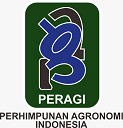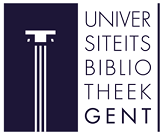Factors Affecting Tomato Production in Batu City, Indonesia
Abstract
Keywords
Full Text:
PDFReferences
Anggraini, Nuni et al. 2016. “Efisiensi Teknis, Alokatif Dan Ekonomi Pada Usahatani Ubikayu Di Kabupaten Lampung Tengah Provinsi Lampung.” Jurnal Agribisnis Indonesia (Journal of Indonesian Agribusiness) 4(1):43–56.
Arifin, Zainol, and Farah Mutiara. 2021. “Faktor Yang Berpengaruh Pada Produksi Dan Pendapatan Stroberi Di Desa Pandanrejo, Kecamatan Bumiaji, Kota Batu.” Jurnal Pertanian Cemara 18(2):94–111.
Arikunto, Suharsimi. 2013. “Metode Penelitian Kuantitatif Kualitatif Dan R&D.” Alfabeta: Bandung.
Asriadi, Andi Amran. 2021. “Analisa Optimasi Faktor-Faktor Produksi Usahatani Tomat Di Desa Pattapang Kecamatan Tinggimoncong Kabupaten Gowa.” J. Agribis 14(2):1842–64.
Az-zammy, Ilhafa et al. 2022. “Faktor-Faktor Yang Mempengaruhi Keputusan Petani Tomat Dalam Mengadopsi Benih Unggul Di Kabupaten Bener Meriah Dan Kabupaten Aceh Tengah.” Jurnal Ilmiah Mahasiswa Pertanian 7(1):249–57. doi: 10.17969/jimfp.v7i1.19080.
Colanero, Sara et al. 2020. “Alternative Splicing in the Anthocyanin Fruit Gene Encoding an R2R3 MYB Transcription Factor Affects Anthocyanin Biosynthesis in Tomato Fruits.” Plant Communications 1(1).
Collins, Edward J. et al. 2022. “Tomatoes: An Extensive Review of the Associated Health Impacts of Tomatoes and Factors That Can Affect Their Cultivation.” Biology 11(2):239.
Koisine, Herman Yosep et al. 2019. “Faktor-Faktor Yang Mempengaruhi Produksi Tomat Di Desa Claket, Kecamatan Pacet, Kabupaten Mojokerto.” Jurnal Ilmiah Sosio Agribis 19(1).
Lenaini, Ika. 2021. “Teknik Pengambilan Sampel Purposive Dan Snowball Sampling.” Historis: Jurnal Kajian, Penelitian Dan Pengembangan Pendidikan Sejarah 6(1):33–39.
Majid, Nur Kholis et al. 2022. “Faktor Faktor Yang Mempengaruhi Produksi Usahatani Tomat.” Jurnal Ilmiah Mahasiswa Agroinfo Galuh 9(3):1357. doi: 10.25157/jimag.v9i3.8442.
Mariani, S. D. et al. 2018. “Pertumbuhan Dan Hasil Tanaman Tomat (Lycopersicum Esculentum Mill.) Varietas Permata Terhadap Dosis Pupuk Kotoran Ayam Dan Kcl.” … Produksi Tanaman 5(9):1505–11.
Marina, Ida, and Dety Sumawati. 2017. “Model Produksi Tomat Di Sentra Produksi Kabupaten Garut.” Jurnal Ilmu Pertanian Dan Peternakan 5(2):147–55.
Maureira, Fidel et al. 2022. “Evaluating Tomato Production in Open-Field and High-Tech Greenhouse Systems.” Journal of Cleaner Production 337:130459.
Mubarok, Syariful et al. 2020. “Hormon Etilen Dan Auksin Serta Kaitannya Dalam Pembentukan Tomat Tahan Simpan Dan Tanpa Biji.” Kultivasi 19(3):1217–22. doi: 10.24198/kultivasi.v19i3.29408.
Purwantini, Tri Bastuti. 2019. “Pertanian Organik: Konsep, Kinerja, Prospek, Dan Kendala.” Pp. 127–42 in Forum Penelitian Agro Ekonomi. Vol. 37.
Rasyid, Abdul et al. 2024. “Analisis Faktor-Faktor Yang Mempengaruhi Produksi Tomat Di Kecamatan Astambul Kabupaten Banjar Provinsi Kalimantan Selatan.” Frontier Agribisnis 8(3):429–36.
Ronga, Domenico et al. 2020. “Using Digestate and Biochar as Fertilizers to Improve Processing Tomato Production Sustainability.” Agronomy 10(1):138.
Setiawan, Bayu et al. 2022. “Faktor-Faktor Yang Mempengaruhi Produksi Tomat Di Provinsi Kalimantan Selatan.” Frontier Agribisnis 6(4):318–24.
Tuwongkesong, Christy P. et al. 2013. “Efisiensi Penggunaan Faktor-Faktor Produksi Pada Usahatani Brokoli di Kelurahan Kakaskasen Kecamatan Tomohon Utara Kota Tomohon.” in Cocos. Vol. 3.
Zhang, Shaokang et al. 2022. “Tomato Brown Rugose Fruit Virus: An Emerging and Rapidly Spreading Plant RNA Virus That Threatens Tomato Production Worldwide.” Molecular Plant Pathology 23(9):1262–77.
Refbacks
- There are currently no refbacks.


























